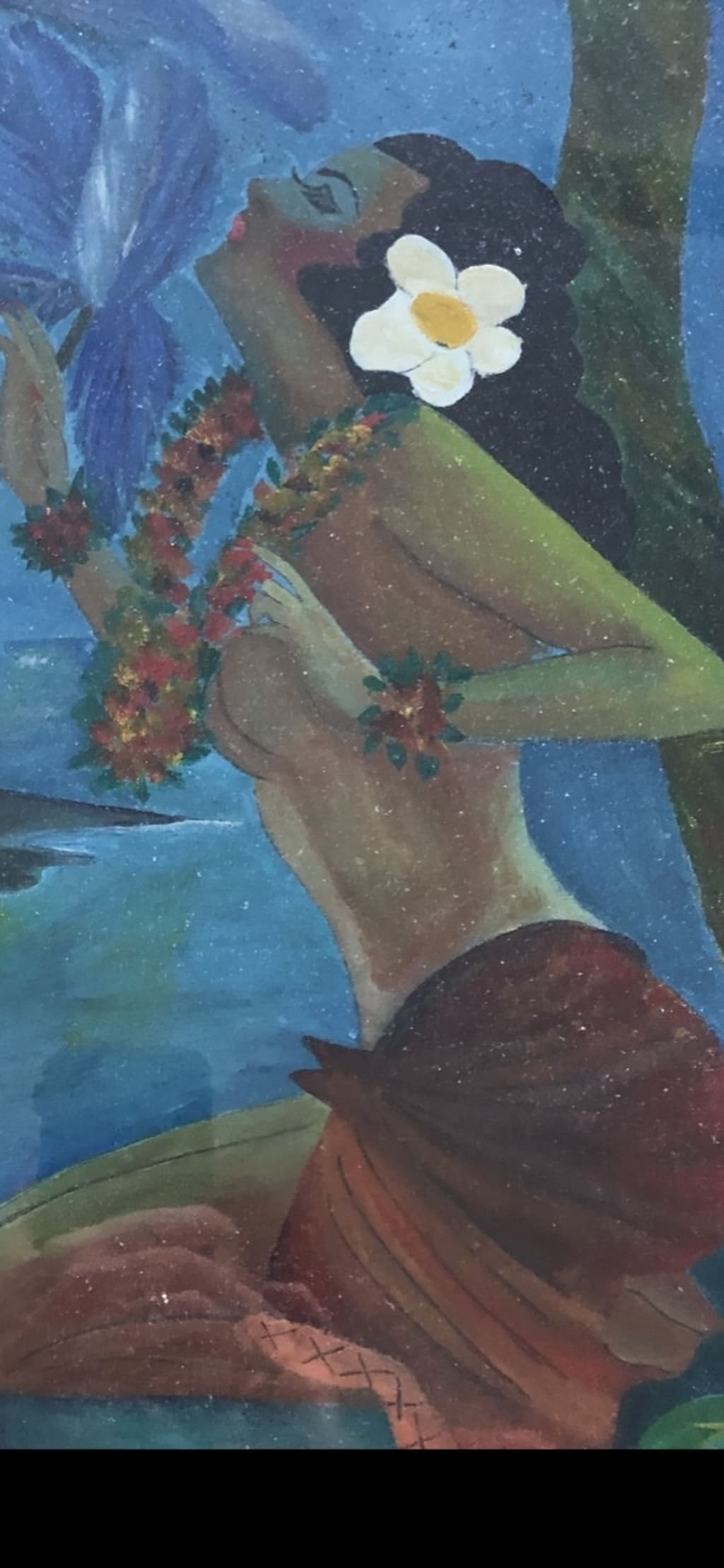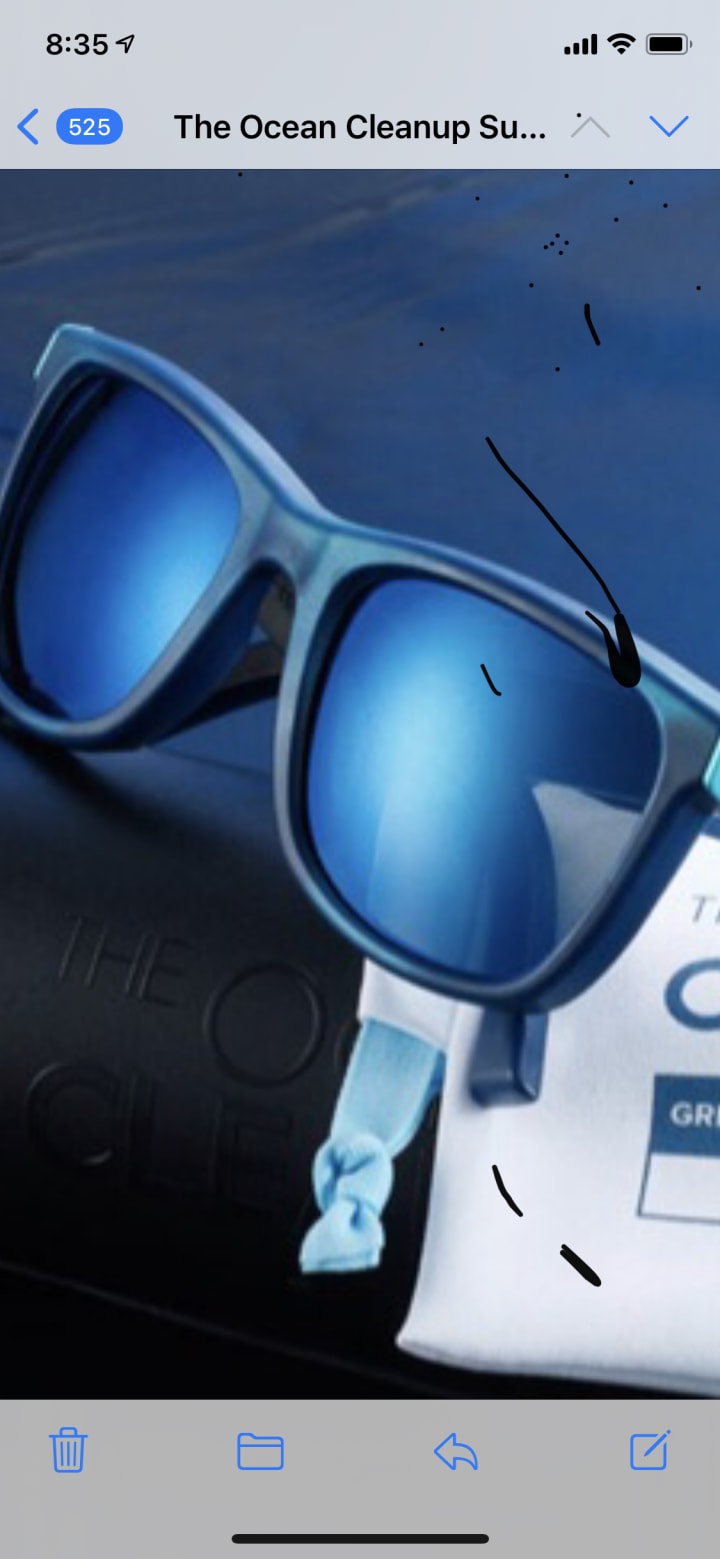The Mermaid Who Met A Patch of Blue
No Blue=No Green

The Crying Mermaid Who Met a Patch of Blue
No Blue= No Green
This series is a collaboration of ten writers. It will cover many aspects of the plastic pollution ocean problem. Thanks to Courtney Capone whose passion for thriving oceans brought us all together. Keep your eye out for part two, where Paula Shablo, @PaulaShablo will share a story about the effect on whales. This story is a fictionalized account of a true story happening just as we speak. The names of people and programs have been changed. It is based on a very real problem that is plaguing our planet.
**************************
You may wonder how a young genius mind could invent something that could potentially clean up the world’s oceans, and rivers. This very clever person might be someone you know who has enough tenacity to stick with a program and work diligently unraveling untested theories.
The facts get more eerie by the day. One thousand of the world’s rivers are actually causing plastic pollution in oceans. It is estimated that 1.15 to 2.41 million tons of plastic are entering the oceans from rivers. The idea for intercepting this plastic, has been waiting in the wings, and it would just take the right person to unleash a new idea for change.
On an Eco walk along the beach in Santa Monica California, about eight years ago, you might have strolled along with a giant canvas sack, collecting every plastic bottle and piece of flotsam that may have rolled in from the ocean including an old Brownie flash camera with film and a three layer plastic cake decoration used for a goofy birthday party. After the celebration, the cake and balloons wound up being filtered into a local river and ultimately found its way to the Pacific Ocean, whipped and spun by the waves of time.
At the end of the day, a campfire was built, and one hundred people, including the kids, and furry friends that spent hours committing to the job of cleaning the beach gathered. The whole group sang songs, told stories and shared poetry about the ocean magnificent, until one kid with a shock of orange hair, and freckles yelled,
“There is more coming in by the truck load… oh boy we are going be here all night”.
And this is when the whole group went home feeling the energy of defeat. They had been compatriots and warriors for the survival of healthy oceans during a day long campaign. They accomplished a day’s worth of environmental effort, but alas, they were longing for a unique collective understanding about how to deal with the ongoing Pacific Coast Garbage Patch, as it had come to be known.
What is the Pacific Coast Garbage Patch?
The Pacific Coast Garbage Patch is actually not a floating island of garbage strung together. More accurately, it is Marine debris that has been concentrated in areas of the Pacific, not specific to just one area. Over the years this debris becomes micro plastics or finely broken down materials, that sometimes becomes almost microscopic. In many forms, it is not apparent to the naked eye, but enticing to fish that think it’s an edible source of food. When fish, or animals ingest non organic material, they die, choke or develop other issues. In its journey, the micro plastic swarms climb down various stratum of the water column, until it reaches the belly of the ocean. This is the source, and beginning of the food chain.
There are new predictions about this monster plastic. There will be a build-up of over 160 million pounds of new debris added to the garbage patch between California and Hawaii unless something is done to halt it. If you were hanging out on a barge in the middle of the ocean, you could probably come back to shore with a few collected garbage bags of plastic refuse, but this would get pretty tiresome.
The optimist in all of us has been waiting to meet the kick ass that could invent something that could chew up garbage and resolve the world crisis...
Typically, the unassuming mastermind of heroic challenge seems to have a quirky unworldly interest in the issues for resolve, and possesses some highly unusual characteristics.
And now we meet Bay Feldt, whose Danish parents, came to the United States to start a Gristmill company in California in 1995. The little home that Fiona, and Reed Feldt rented was a few miles away from the beach on a bluff. Fiona, grew an herb garden in their small high desert yard, and focused on building a small business from locally grown wheat and Amaranth. The doors of their home were always open for neighbors to come visit, and the salt air, filled every breath. Fiona was fishing with her husband on the Santa Monica pier, one hot July afternoon, when she went into labor with Bay, she decided that there was very little time to get to the hospital, so she got into the ocean, stripped herself down, and with the assistance of her husband and the lifeguards, Bay was born in the ocean underwater. As he surfaced for his first breath he paddled just like a baby turtle. Bay’s first steps were not toward his parents, but toward the sea, and interestingly enough his first sentence was “Let’s get busy”.
The Feldt household was always a hub for questioning, learning and debate. Fiona, encouraged the family to use less packaging, and they became rigorous recyclers. They bought from local farmers and made clothing from recycled cotton thrift giveaways. They became big proponents of save the ocean campaigns, and one of their favorite involvements was with the Maritime tribes in San Diego. The tribes offered many programs to the community which focused on the indigenous people who lived on this earth hundreds of years ago. They respected all of nature to the highest part of the sky, and to the depth of the oceans. The Felds shared many of their wheat products with the tribes, and developed an interest in exchange programs for teens. When Bay was little, they took him to the Gristmill, and as he munched on a fresh baked loaf of bread with a wad of butter, he became fascinated with the grinding stone wheels that churned the seeds, and spewed out fine flour. The mechanics of the churning was food for thought for Bay, as he wondered about the ocean’s continued currents and where they came from. He learned that the large scale surface ocean currents were driven by global winds that were revved up by the sun’s energy. The currents moved heat from the tropics to the polar areas thus influencing local and global climate.
By the time Bay Feldt got to high school, he spent much time with the chess club and his Earth Science group. On cool nights, after school, Bay sat on the house porch with kids from school, around a fire pit. The big deal became chess games that were played as part of a “living series” of mythology episodes, shared by the players. The love of his life was the ocean, and his personal mythology tale was about a beautiful Mermaid who lived deep under the ocean of the Pacific. She was watching all the events of the world, and as the Queen, she would soon appear and rant about humans making such a global mess. One night, Bay woke up from a dream and announced that he was able to swim deep under the ocean without surfacing, with the most beautiful creature he ever saw. She lived in a dimension of clean deep blue water. It was here that fish were plentiful and swam with their families. He said you could hear them laughing because they were not challenged by the outside world or the dumping ground they had come to live in.
On that day at school, his favorite teacher Mr. Nesbit, who reminded him of a tall Albert Einstein, required an assignment.

“I would like you to come back with evidence of the beach plastic garbage problem… the biggest haul, earns an A in my class.”
Bay had a perpetual inquiring mind, and asked if there would be extra credit for an idea for a solution.
Bay called his friend Yahola Simmons whose family was involved with the Maritime tribe and explained the project to him. Yahola asked Bay if he wanted to come with them on a canoe expedition that weekend. A five hundred year old canoe had been unearthed at a building site near the ocean in San Diego. The canoe was associated with the early people that lived along the coast. It had been restored and would be sailed near the Catalina islands. Other boats including sailboats, and motor boats would follow the group. Bay, Yahola and one of the tribe directors were selected to sail in the original canoe.

The weekend would present itself as a festive day and one that the news media would hear about. Yahola, Bay and the tribal director arrived at Catalina Island by boat. The original canoe was taken to the island and air lifted gently into the water from a barge boat.
As the three young men sailed in the canoe, they felt the presence of the people who used the oars to paddle. A few dolphins leaped high into the air and surrounded the boat squeaking with high pitched talking sounds. They could feel the movement of the water up against the boat and felt a deep connection to the ocean world and time past. At that moment, yards away, they saw the oddest drifting mass of unidentified filament bulk. Tangled in the mess was something that bared the verisimilitude of a human looking form. The young men paddled the canoe quickly to the mysterious floating object, and in a warp of fishing line and other jetsam was a mermaid statue that became part of throw away garbage. There were all kinds of things in the capture including a record player, lots of plastic bottles, a construction work hat, and a cell phone.
Then a very quiet pair of eyes looked out of the netting with desperation. As the men untangled the net, they very gently released a sea turtle. His escape was slow and labored at first, but then looked back sending energy of thanks. Yahola told Bay, that it was meant to find this turtle. Sea Turtle represents how Earth is carried on the back of Turtle's shell. "We must keep her house clean".

Yahola offered to put the garbage in one of the motor boats and haul it in to shore. What surprised and infuriated the men was that in a pristine part of the ocean, the garbage patch had threaded its way to an area that was supposed to be protected. They commented that there were few pristine places left and decided to navigate the area more often.
When the boats came back to shore, the guys had an opportunity to sort and study their finds. Bay had found the Mermaid he dreamed about, although she was a tearful version of what he had imagined. She had several tears rolling down her face made by wilting paint that was hardened by the sun. The rolling paint gave the appearance that she was crying. Bay propped the statue up, and in that moment decided that the Mermaid, would be the masthead for a boat that he would operate. The mission was to collect garbage deep in the ocean waters. Bay waded into the water, and made an announcement out loud to the world
I will find the source and end the Pacific Garbage Patch
In 2013 Bay Feldt began his first exploratory efforts to investigate garbage capturing inventions. His theory was that if he could meet the garbage where the source was, it could be collected and filtered for recycling. His battle cry was “If you want to catch the plastic, act like the plastic”. What fascinated him was that the ocean currents would literally speed up the movement of his garbage collection device. There was an energy or physics in the ocean motion that magnetized the garbage streams to the first invented garbage device. It took many practice sessions and creating prototypes which were sea worthy.
Bay’s first inventions involved huge netting materials, with several free floating anchoring devices; but he feared the capture of fish and mammals.
In 2014 he reached out to the public internationally and found 38,000 donors and received two million dollars from 160 countries. He applied all of his contributions to his non- profit organization called Oceans Again. Bay was able to acquire a fleet of thirty boats. The first boat was sent out to sea with the Crying Mermaid as the masthead. His fleet developed a mapping system, along with aerial photography that became specialized for the identification of debris. Sampling of different locations at different times allowed for more accurate maps.
In 2018, he developed a pipe system that measured two thousand feet long, with a drop mesh screen that reached ten feet below the surface of the ocean. It had a very simple anchoring system which kept the unit above the surface. The newest unit freely revolves and rotates through the ocean as it fixes itself toward the currents.
Currently, after two years, Bay Feldt, has supervised thousands of tons of retrieved plastic, and chose to introduce a product made almost exclusively with the recycled beads of plastic. With two football fields of collection material Feldt’s first product is sun glasses.

They are stylish, UV protected and even have a bar code in case you lose them. The case is also made of recycled plastic from his catch. The total cost is $199 and of all the proceeds go back to funding the worldwide organization. By the way, in some of the most recent photos, it looks like the Crying Mermaid, has been given a new look. She has been seen wearing Bay Feldt’s sunglasses, and no more tears, she wears a Mona Lisa smile.
************************************
I would like to thank the diligent leadership and foresight of Courtney Capone, who came up with this brilliant idea to partner with all of us. She is truly a lover of the natural world and thrival of the ocean.
You can continue researching The Ocean Cleanup (Actual program name) and Boyan Slat’s story about his ocean saving invention.
The Ocean Pacific, North Pacific Foundation
100 Wall Street, 10th Floor
New York, New York
10005
*************
These Youtube films will provide some great info
1.Youtube From Trash To Treasure - Keeping Track of the Plastic | Cleaning Oceans | The Ocean Cleanup
2.Boyan Slat & The Ocean Cleanup Rid the Seas of Plastic #PMIFuture5
3. Youtube Boyan Slat unveils the Interceptor River Cleanup system | Cleaning River...
4. Sunglasses made by the The Ocean Clean Up Organization. Price= $199, and all proceeds return to the non-profit organization to continue the program and continue reaching out world wide
About the Creator
Zel Harrison
I travel with a nap sack on my back to gather stories and sit in the circle of humanity.






Comments
There are no comments for this story
Be the first to respond and start the conversation.